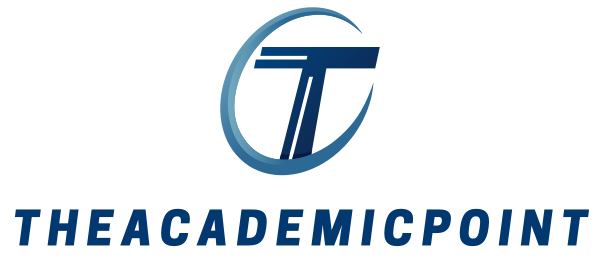- October 7, 2025
- Posted by: Educational V.
- Categories: Financial Aid, Save Money, Scholarships

The journey to college is filled with big decisions, and one of the most exciting (and perhaps most daunting) is deciding where to apply. With thousands of amazing schools across the country, how do you narrow that list down to the perfect “college short list”—the small group of institutions that truly align with your goals and potential?
This process is more than just looking at rankings; it’s a strategic endeavor that balances ambition with reality. At ScholarshipOwl, we want to help you make informed decisions that maximize your chances of acceptance while ensuring a great fit. Here is your guide to building a winning college short list so that you are ready to apply to college.
Key Considerations for Your College Short List

A smart short list is built on finding three distinct types of fit:
Win more scholarships with less effort
Simplify and focus your application process with the one-stop platform for vetted scholarships.
Academic Fit
This is about finding a school that offers the major you want, a curriculum that excites you, and faculty who are leaders in their field.
Major Availability
Does the school offer your chosen major, and is the program well-regarded?
Coursework
Does the school offer the challenging, rigorous courses you’re looking for?
Learning Style
Do you prefer small, discussion-based classes (often found at liberal arts colleges) or large lecture halls and research opportunities (often found at large universities)?
Financial Fit

College is an investment, and affordability should be one of your top considerations from the start. You may be able to qualify for need-based aid through the FAFSA, or scholarships from the colleges you are applying to or external scholarships through the ScholarshipOwl platform, but choosing a college with a more affordable sticker price is also important.
Net Price
Look beyond the sticker price! Use the college’s Net Price Calculator to estimate your likely out-of-pocket cost after grants and scholarships.
Scholarship Availability
Does the school offer generous institutional aid or scholarships you may qualify for?
Debt Reality
Be realistic about the amount of student loan debt you or your family are willing to take on.
Cultural / Values Fit

This is about finding the place where you’ll feel comfortable, supported, and engaged.
Campus Vibe
Does the culture feel competitive or collaborative? Reserved or outgoing?
Diversity and Inclusion
Does the student body reflect the kind of diversity you value?
Values
Does the school’s mission and focus align with your personal and social values (e.g., environmental focus, religious affiliation, political climate)?
Other Important Factors

Graduation Rate
What percentage of students graduate within four or six years? A high rate often indicates strong student support and resources. Checkout the College Scorecard to see graduation rates.
ROI (Return on Investment)
What is the average starting salary for graduates? This helps you gauge the financial value of the degree in your intended field. The College Scorecard has ROI information that you’ll find really helpful.
Location
City, suburban, or rural? How close is it to home?
Population Size
Do you prefer a large university with thousands of students or a small college with intimate class settings?
Reputation
Consider the school’s overall reputation within your intended career industry.
Internships and Employment
Is the college located in an area that offers robust opportunities for internships and entry-level employment in your field?
The College Short List Strategy: Reach, Match, and Safety Schools

Building a balanced short list means strategically categorizing schools based on your academic profile (GPA, test scores, course rigor) compared to the profile of their previously admitted students.
Reach Schools
Acceptance is possible but unlikely. Your GPA and test scores typically fall below the college’s 25th percentile of admitted students
Match or Target School
Acceptance is likely. Your GPA and test scores falls squarely between the 25th and 75th percentiles of admitted students.
Safety School
Acceptance is highly likely. Your GPA and test scores are above the 75th percentile of admitted students.
How Many of Each Should You Apply For?

Balance is key to minimizing stress and maximizing options. While the general strategy is to apply to a mix, the exact number should reflect your personal circumstances:
Reach Schools
2-4 (Aim for ambition, but don’t overdo it.) Note: Students targeting highly selective schools may wish to apply to a few additional reach schools to account for the competitive nature of the applicant pool.
Match Schools
4-6 (This is where you should concentrate most of your applications, as they offer your best chances for a great fit.)
Safety Schools
2-3 (Crucial for peace of mind, but ensure they are schools you would actually be happy and able to afford attending.) Note: If you have struggled academically, consider having a higher number of safety schools (4-5) to maximize your acceptance certainty.
Total Short List Target
8 to 13 Applications
Remember: There is no requirement that you apply to any reach schools! Many students choose only to apply to safety and match schools, a strategy that helps limit application fee costs and ensures a strong set of affordable, likely acceptances.
Deep Dive: How to Determine Your Interest

Knowing a school’s acceptance rate isn’t enough; you need to know if the school is a great fit for you. Use these methods to get a true feel for the campus culture:
Campus Visits
If possible, take an official in-person tour. If not, utilize virtual tours created by the college.
Video Exploration
Check out video tours created by the college itself, as well as informal “day in the life” videos created by students on platforms like YouTube.
College Fairs and High School Presentations

Attend college fairs and presentations at your high school or local community college. Talk directly with admissions representatives and take notes.
Social Media & Online Reviews
Follow the colleges on their official social media channels, and look up student reviews on sites like Niche or Unigo.
Connect with Insiders
This is crucial! Reach out to current students or recent alumni on social media or LinkedIn. Ask them honest questions about campus life, the academic rigor, and what they wish they had known before they enrolled.
Finding the Colleges Best-Fit for You

Building your college short list is an empowering process. By taking the time to honestly assess your academic profile and align your choices with your personal, financial, and cultural needs, you create a strategic list of target schools. Remember, the goal isn’t just to get accepted anywhere; it’s to choose a path where you know you can thrive. A balanced list ensures that no matter what decisions roll in, you’ll have an excellent, affordable option waiting for you.


